Consumer Electronics
Wearable Devices
Medical Devices
Internet of Things
Energy Harvesting
Lithium-Ion
Lithium Polymer
Solid State
Nickel-Metal Hydride
Less than 100 mAh
100 mAh to 200 mAh
200 mAh to 500 mAh
More than 500 mAh
Personal Care
Healthcare
Industrial
Telecommunications
North America
Europe
South America
Asia Pacific
Middle East and Africa
North America Outlook (USD Billion, 2019-2032)
North America Micro Battery Market by Application Type
Consumer Electronics
Wearable Devices
Medical Devices
Internet of Things
Energy Harvesting
North America Micro Battery Market by Battery Type
Lithium-Ion
Lithium Polymer
Solid State
Nickel-Metal Hydride
North America Micro Battery Market by Capacity Type
Less than 100 mAh
100 mAh to 200 mAh
200 mAh to 500 mAh
More than 500 mAh
North America Micro Battery Market by End Use Type
Personal Care
Healthcare
Industrial
Telecommunications
North America Micro Battery Market by Regional Type
US
Canada
US Outlook (USD Billion, 2019-2032)
US Micro Battery Market by Application Type
Consumer Electronics
Wearable Devices
Medical Devices
Internet of Things
Energy Harvesting
US Micro Battery Market by Battery Type
Lithium-Ion
Lithium Polymer
Solid State
Nickel-Metal Hydride
US Micro Battery Market by Capacity Type
Less than 100 mAh
100 mAh to 200 mAh
200 mAh to 500 mAh
More than 500 mAh
US Micro Battery Market by End Use Type
Personal Care
Healthcare
Industrial
Telecommunications
CANADA Outlook (USD Billion, 2019-2032)
CANADA Micro Battery Market by Application Type
Consumer Electronics
Wearable Devices
Medical Devices
Internet of Things
Energy Harvesting
CANADA Micro Battery Market by Battery Type
Lithium-Ion
Lithium Polymer
Solid State
Nickel-Metal Hydride
CANADA Micro Battery Market by Capacity Type
Less than 100 mAh
100 mAh to 200 mAh
200 mAh to 500 mAh
More than 500 mAh
CANADA Micro Battery Market by End Use Type
Personal Care
Healthcare
Industrial
Telecommunications
Europe Outlook (USD Billion, 2019-2032)
Europe Micro Battery Market by Application Type
Consumer Electronics
Wearable Devices
Medical Devices
Internet of Things
Energy Harvesting
Europe Micro Battery Market by Battery Type
Lithium-Ion
Lithium Polymer
Solid State
Nickel-Metal Hydride
Europe Micro Battery Market by Capacity Type
Less than 100 mAh
100 mAh to 200 mAh
200 mAh to 500 mAh
More than 500 mAh
Europe Micro Battery Market by End Use Type
Personal Care
Healthcare
Industrial
Telecommunications
Europe Micro Battery Market by Regional Type
Germany
UK
France
Russia
Italy
Spain
Rest of Europe
GERMANY Outlook (USD Billion, 2019-2032)
GERMANY Micro Battery Market by Application Type
Consumer Electronics
Wearable Devices
Medical Devices
Internet of Things
Energy Harvesting
GERMANY Micro Battery Market by Battery Type
Lithium-Ion
Lithium Polymer
Solid State
Nickel-Metal Hydride
GERMANY Micro Battery Market by Capacity Type
Less than 100 mAh
100 mAh to 200 mAh
200 mAh to 500 mAh
More than 500 mAh
GERMANY Micro Battery Market by End Use Type
Personal Care
Healthcare
Industrial
Telecommunications
UK Outlook (USD Billion, 2019-2032)
UK Micro Battery Market by Application Type
Consumer Electronics
Wearable Devices
Medical Devices
Internet of Things
Energy Harvesting
UK Micro Battery Market by Battery Type
Lithium-Ion
Lithium Polymer
Solid State
Nickel-Metal Hydride
UK Micro Battery Market by Capacity Type
Less than 100 mAh
100 mAh to 200 mAh
200 mAh to 500 mAh
More than 500 mAh
UK Micro Battery Market by End Use Type
Personal Care
Healthcare
Industrial
Telecommunications
FRANCE Outlook (USD Billion, 2019-2032)
FRANCE Micro Battery Market by Application Type
Consumer Electronics
Wearable Devices
Medical Devices
Internet of Things
Energy Harvesting
FRANCE Micro Battery Market by Battery Type
Lithium-Ion
Lithium Polymer
Solid State
Nickel-Metal Hydride
FRANCE Micro Battery Market by Capacity Type
Less than 100 mAh
100 mAh to 200 mAh
200 mAh to 500 mAh
More than 500 mAh
FRANCE Micro Battery Market by End Use Type
Personal Care
Healthcare
Industrial
Telecommunications
RUSSIA Outlook (USD Billion, 2019-2032)
RUSSIA Micro Battery Market by Application Type
Consumer Electronics
Wearable Devices
Medical Devices
Internet of Things
Energy Harvesting
RUSSIA Micro Battery Market by Battery Type
Lithium-Ion
Lithium Polymer
Solid State
Nickel-Metal Hydride
RUSSIA Micro Battery Market by Capacity Type
Less than 100 mAh
100 mAh to 200 mAh
200 mAh to 500 mAh
More than 500 mAh
RUSSIA Micro Battery Market by End Use Type
Personal Care
Healthcare
Industrial
Telecommunications
ITALY Outlook (USD Billion, 2019-2032)
ITALY Micro Battery Market by Application Type
Consumer Electronics
Wearable Devices
Medical Devices
Internet of Things
Energy Harvesting
ITALY Micro Battery Market by Battery Type
Lithium-Ion
Lithium Polymer
Solid State
Nickel-Metal Hydride
ITALY Micro Battery Market by Capacity Type
Less than 100 mAh
100 mAh to 200 mAh
200 mAh to 500 mAh
More than 500 mAh
ITALY Micro Battery Market by End Use Type
Personal Care
Healthcare
Industrial
Telecommunications
SPAIN Outlook (USD Billion, 2019-2032)
SPAIN Micro Battery Market by Application Type
Consumer Electronics
Wearable Devices
Medical Devices
Internet of Things
Energy Harvesting
SPAIN Micro Battery Market by Battery Type
Lithium-Ion
Lithium Polymer
Solid State
Nickel-Metal Hydride
SPAIN Micro Battery Market by Capacity Type
Less than 100 mAh
100 mAh to 200 mAh
200 mAh to 500 mAh
More than 500 mAh
SPAIN Micro Battery Market by End Use Type
Personal Care
Healthcare
Industrial
Telecommunications
REST OF EUROPE Outlook (USD Billion, 2019-2032)
REST OF EUROPE Micro Battery Market by Application Type
Consumer Electronics
Wearable Devices
Medical Devices
Internet of Things
Energy Harvesting
REST OF EUROPE Micro Battery Market by Battery Type
Lithium-Ion
Lithium Polymer
Solid State
Nickel-Metal Hydride
REST OF EUROPE Micro Battery Market by Capacity Type
Less than 100 mAh
100 mAh to 200 mAh
200 mAh to 500 mAh
More than 500 mAh
REST OF EUROPE Micro Battery Market by End Use Type
Personal Care
Healthcare
Industrial
Telecommunications
APAC Outlook (USD Billion, 2019-2032)
APAC Micro Battery Market by Application Type
Consumer Electronics
Wearable Devices
Medical Devices
Internet of Things
Energy Harvesting
APAC Micro Battery Market by Battery Type
Lithium-Ion
Lithium Polymer
Solid State
Nickel-Metal Hydride
APAC Micro Battery Market by Capacity Type
Less than 100 mAh
100 mAh to 200 mAh
200 mAh to 500 mAh
More than 500 mAh
APAC Micro Battery Market by End Use Type
Personal Care
Healthcare
Industrial
Telecommunications
APAC Micro Battery Market by Regional Type
China
India
Japan
South Korea
Malaysia
Thailand
Indonesia
Rest of APAC
CHINA Outlook (USD Billion, 2019-2032)
CHINA Micro Battery Market by Application Type
Consumer Electronics
Wearable Devices
Medical Devices
Internet of Things
Energy Harvesting
CHINA Micro Battery Market by Battery Type
Lithium-Ion
Lithium Polymer
Solid State
Nickel-Metal Hydride
CHINA Micro Battery Market by Capacity Type
Less than 100 mAh
100 mAh to 200 mAh
200 mAh to 500 mAh
More than 500 mAh
CHINA Micro Battery Market by End Use Type
Personal Care
Healthcare
Industrial
Telecommunications
INDIA Outlook (USD Billion, 2019-2032)
INDIA Micro Battery Market by Application Type
Consumer Electronics
Wearable Devices
Medical Devices
Internet of Things
Energy Harvesting
INDIA Micro Battery Market by Battery Type
Lithium-Ion
Lithium Polymer
Solid State
Nickel-Metal Hydride
INDIA Micro Battery Market by Capacity Type
Less than 100 mAh
100 mAh to 200 mAh
200 mAh to 500 mAh
More than 500 mAh
INDIA Micro Battery Market by End Use Type
Personal Care
Healthcare
Industrial
Telecommunications
JAPAN Outlook (USD Billion, 2019-2032)
JAPAN Micro Battery Market by Application Type
Consumer Electronics
Wearable Devices
Medical Devices
Internet of Things
Energy Harvesting
JAPAN Micro Battery Market by Battery Type
Lithium-Ion
Lithium Polymer
Solid State
Nickel-Metal Hydride
JAPAN Micro Battery Market by Capacity Type
Less than 100 mAh
100 mAh to 200 mAh
200 mAh to 500 mAh
More than 500 mAh
JAPAN Micro Battery Market by End Use Type
Personal Care
Healthcare
Industrial
Telecommunications
SOUTH KOREA Outlook (USD Billion, 2019-2032)
SOUTH KOREA Micro Battery Market by Application Type
Consumer Electronics
Wearable Devices
Medical Devices
Internet of Things
Energy Harvesting
SOUTH KOREA Micro Battery Market by Battery Type
Lithium-Ion
Lithium Polymer
Solid State
Nickel-Metal Hydride
SOUTH KOREA Micro Battery Market by Capacity Type
Less than 100 mAh
100 mAh to 200 mAh
200 mAh to 500 mAh
More than 500 mAh
SOUTH KOREA Micro Battery Market by End Use Type
Personal Care
Healthcare
Industrial
Telecommunications
MALAYSIA Outlook (USD Billion, 2019-2032)
MALAYSIA Micro Battery Market by Application Type
Consumer Electronics
Wearable Devices
Medical Devices
Internet of Things
Energy Harvesting
MALAYSIA Micro Battery Market by Battery Type
Lithium-Ion
Lithium Polymer
Solid State
Nickel-Metal Hydride
MALAYSIA Micro Battery Market by Capacity Type
Less than 100 mAh
100 mAh to 200 mAh
200 mAh to 500 mAh
More than 500 mAh
MALAYSIA Micro Battery Market by End Use Type
Personal Care
Healthcare
Industrial
Telecommunications
THAILAND Outlook (USD Billion, 2019-2032)
THAILAND Micro Battery Market by Application Type
Consumer Electronics
Wearable Devices
Medical Devices
Internet of Things
Energy Harvesting
THAILAND Micro Battery Market by Battery Type
Lithium-Ion
Lithium Polymer
Solid State
Nickel-Metal Hydride
THAILAND Micro Battery Market by Capacity Type
Less than 100 mAh
100 mAh to 200 mAh
200 mAh to 500 mAh
More than 500 mAh
THAILAND Micro Battery Market by End Use Type
Personal Care
Healthcare
Industrial
Telecommunications
INDONESIA Outlook (USD Billion, 2019-2032)
INDONESIA Micro Battery Market by Application Type
Consumer Electronics
Wearable Devices
Medical Devices
Internet of Things
Energy Harvesting
INDONESIA Micro Battery Market by Battery Type
Lithium-Ion
Lithium Polymer
Solid State
Nickel-Metal Hydride
INDONESIA Micro Battery Market by Capacity Type
Less than 100 mAh
100 mAh to 200 mAh
200 mAh to 500 mAh
More than 500 mAh
INDONESIA Micro Battery Market by End Use Type
Personal Care
Healthcare
Industrial
Telecommunications
REST OF APAC Outlook (USD Billion, 2019-2032)
REST OF APAC Micro Battery Market by Application Type
Consumer Electronics
Wearable Devices
Medical Devices
Internet of Things
Energy Harvesting
REST OF APAC Micro Battery Market by Battery Type
Lithium-Ion
Lithium Polymer
Solid State
Nickel-Metal Hydride
REST OF APAC Micro Battery Market by Capacity Type
Less than 100 mAh
100 mAh to 200 mAh
200 mAh to 500 mAh
More than 500 mAh
REST OF APAC Micro Battery Market by End Use Type
Personal Care
Healthcare
Industrial
Telecommunications
South America Outlook (USD Billion, 2019-2032)
South America Micro Battery Market by Application Type
Consumer Electronics
Wearable Devices
Medical Devices
Internet of Things
Energy Harvesting
South America Micro Battery Market by Battery Type
Lithium-Ion
Lithium Polymer
Solid State
Nickel-Metal Hydride
South America Micro Battery Market by Capacity Type
Less than 100 mAh
100 mAh to 200 mAh
200 mAh to 500 mAh
More than 500 mAh
South America Micro Battery Market by End Use Type
Personal Care
Healthcare
Industrial
Telecommunications
South America Micro Battery Market by Regional Type
Brazil
Mexico
Argentina
Rest of South America
BRAZIL Outlook (USD Billion, 2019-2032)
BRAZIL Micro Battery Market by Application Type
Consumer Electronics
Wearable Devices
Medical Devices
Internet of Things
Energy Harvesting
BRAZIL Micro Battery Market by Battery Type
Lithium-Ion
Lithium Polymer
Solid State
Nickel-Metal Hydride
BRAZIL Micro Battery Market by Capacity Type
Less than 100 mAh
100 mAh to 200 mAh
200 mAh to 500 mAh
More than 500 mAh
BRAZIL Micro Battery Market by End Use Type
Personal Care
Healthcare
Industrial
Telecommunications
MEXICO Outlook (USD Billion, 2019-2032)
MEXICO Micro Battery Market by Application Type
Consumer Electronics
Wearable Devices
Medical Devices
Internet of Things
Energy Harvesting
MEXICO Micro Battery Market by Battery Type
Lithium-Ion
Lithium Polymer
Solid State
Nickel-Metal Hydride
MEXICO Micro Battery Market by Capacity Type
Less than 100 mAh
100 mAh to 200 mAh
200 mAh to 500 mAh
More than 500 mAh
MEXICO Micro Battery Market by End Use Type
Personal Care
Healthcare
Industrial
Telecommunications
ARGENTINA Outlook (USD Billion, 2019-2032)
ARGENTINA Micro Battery Market by Application Type
Consumer Electronics
Wearable Devices
Medical Devices
Internet of Things
Energy Harvesting
ARGENTINA Micro Battery Market by Battery Type
Lithium-Ion
Lithium Polymer
Solid State
Nickel-Metal Hydride
ARGENTINA Micro Battery Market by Capacity Type
Less than 100 mAh
100 mAh to 200 mAh
200 mAh to 500 mAh
More than 500 mAh
ARGENTINA Micro Battery Market by End Use Type
Personal Care
Healthcare
Industrial
Telecommunications
REST OF SOUTH AMERICA Outlook (USD Billion, 2019-2032)
REST OF SOUTH AMERICA Micro Battery Market by Application Type
Consumer Electronics
Wearable Devices
Medical Devices
Internet of Things
Energy Harvesting
REST OF SOUTH AMERICA Micro Battery Market by Battery Type
Lithium-Ion
Lithium Polymer
Solid State
Nickel-Metal Hydride
REST OF SOUTH AMERICA Micro Battery Market by Capacity Type
Less than 100 mAh
100 mAh to 200 mAh
200 mAh to 500 mAh
More than 500 mAh
REST OF SOUTH AMERICA Micro Battery Market by End Use Type
Personal Care
Healthcare
Industrial
Telecommunications
MEA Outlook (USD Billion, 2019-2032)
MEA Micro Battery Market by Application Type
Consumer Electronics
Wearable Devices
Medical Devices
Internet of Things
Energy Harvesting
MEA Micro Battery Market by Battery Type
Lithium-Ion
Lithium Polymer
Solid State
Nickel-Metal Hydride
MEA Micro Battery Market by Capacity Type
Less than 100 mAh
100 mAh to 200 mAh
200 mAh to 500 mAh
More than 500 mAh
MEA Micro Battery Market by End Use Type
Personal Care
Healthcare
Industrial
Telecommunications
MEA Micro Battery Market by Regional Type
GCC Countries
South Africa
Rest of MEA
GCC COUNTRIES Outlook (USD Billion, 2019-2032)
GCC COUNTRIES Micro Battery Market by Application Type
Consumer Electronics
Wearable Devices
Medical Devices
Internet of Things
Energy Harvesting
GCC COUNTRIES Micro Battery Market by Battery Type
Lithium-Ion
Lithium Polymer
Solid State
Nickel-Metal Hydride
GCC COUNTRIES Micro Battery Market by Capacity Type
Less than 100 mAh
100 mAh to 200 mAh
200 mAh to 500 mAh
More than 500 mAh
GCC COUNTRIES Micro Battery Market by End Use Type
Personal Care
Healthcare
Industrial
Telecommunications
SOUTH AFRICA Outlook (USD Billion, 2019-2032)
SOUTH AFRICA Micro Battery Market by Application Type
Consumer Electronics
Wearable Devices
Medical Devices
Internet of Things
Energy Harvesting
SOUTH AFRICA Micro Battery Market by Battery Type
Lithium-Ion
Lithium Polymer
Solid State
Nickel-Metal Hydride
SOUTH AFRICA Micro Battery Market by Capacity Type
Less than 100 mAh
100 mAh to 200 mAh
200 mAh to 500 mAh
More than 500 mAh
SOUTH AFRICA Micro Battery Market by End Use Type
Personal Care
Healthcare
Industrial
Telecommunications
REST OF MEA Outlook (USD Billion, 2019-2032)
REST OF MEA Micro Battery Market by Application Type
Consumer Electronics
Wearable Devices
Medical Devices
Internet of Things
Energy Harvesting
REST OF MEA Micro Battery Market by Battery Type
Lithium-Ion
Lithium Polymer
Solid State
Nickel-Metal Hydride
REST OF MEA Micro Battery Market by Capacity Type
Less than 100 mAh
100 mAh to 200 mAh
200 mAh to 500 mAh
More than 500 mAh
REST OF MEA Micro Battery Market by End Use Type
Personal Care
Healthcare
Industrial
Telecommunications

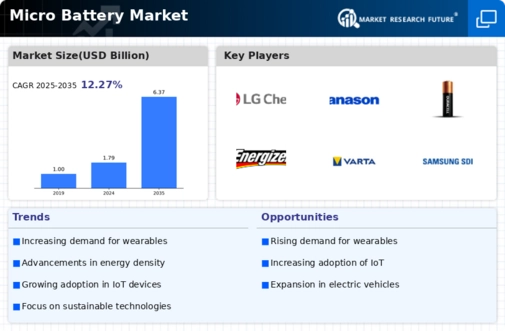


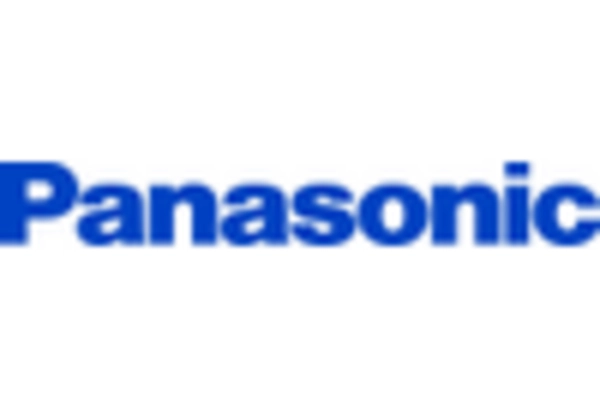
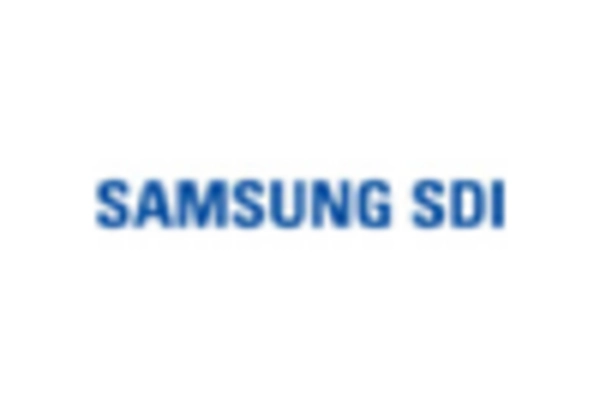
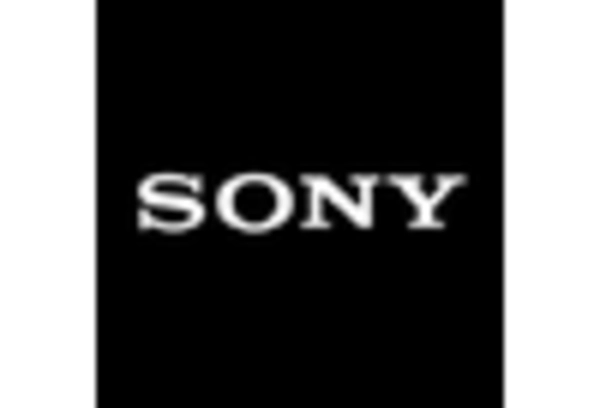
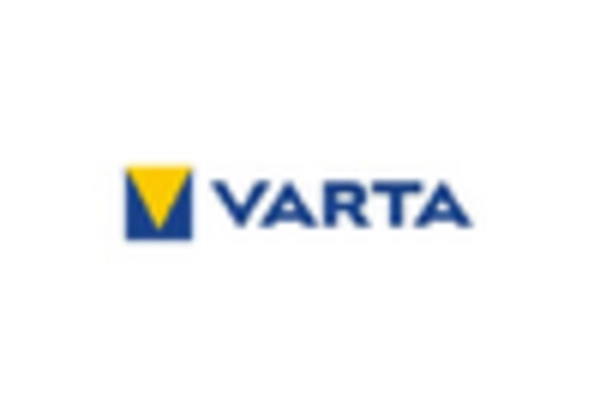









Leave a Comment